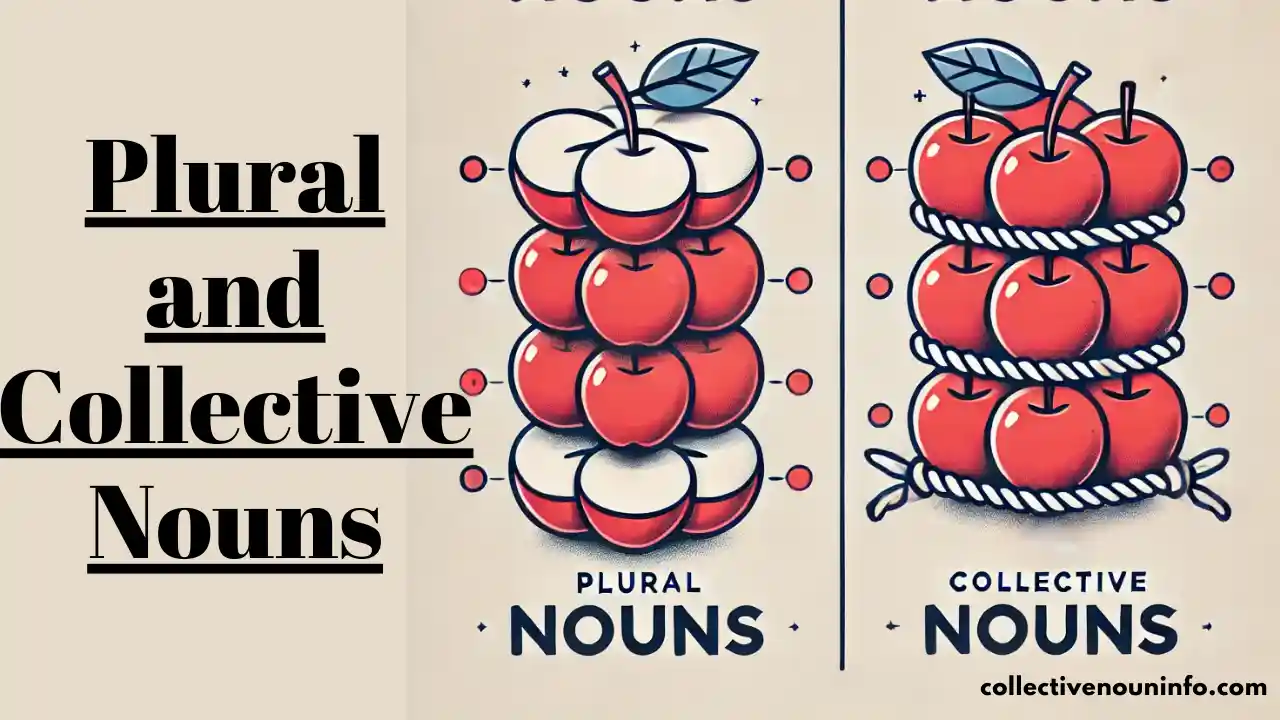Nouns are one of the most basic building blocks of language and understanding how they work is essential to mastering grammar. Two commonly confused types of nouns are plural nouns and collective nouns. Both deal with groups or multiples of something but they serve very different roles in communication. While plural nouns represent more than one individual item or entity collective nouns describe a group of items or entities as a single unified whole. This distinction is subtle but important. Let us explore these concepts in depth to understand how they differ how they function and why they matter in language.
Plural Nouns
Plural nouns are simply the form of a noun that indicates more than one person, animal, object or idea. They are formed by changing the singular noun to its plural form usually by adding s or es.
For example
- Singular: cat -> Plural: cats
- Singular: book -> Plural: books
- Singular: dress -> Plural: dresses
Plural nouns always refer to individual items or entities in a group. They treat each member of the group as a distinct and separate unit.
Key Features of Plural Nouns
1. Grammatical Agreement: Plural nouns always pair with plural verbs. For example:
- The cats are playing.
- The books have been returned.
2. Formation:
- Regular: Adding s or es (dog -> dogs, bus -> buses).
- Irregular: Changing the word entirely (child -> children, mouse -> mice).
3. Function: Plural nouns are used when we want to explicitly refer to more than one of something.
Collective Nouns
A collective noun on the other hand refers to a group of individuals animals or objects treated as a single entity. Unlike plural nouns collective nouns are grammatically singular (most of the time) and emphasize the group as a whole rather than its individual members.
For example:
- Collective Noun: team -> refers to all players in the group as a single unit.
- Collective Noun: herd -> refers to all animals in the group as one entity.
- Collective Noun: committee -> refers to all members of the group acting as one.
Key Features of Collective Nouns
Grammatical Agreement: Collective nouns can take either singular or plural verbs depending on whether the group is being viewed as a single unit or as individual members. For example:
- Singular: The team is practicing hard. (The team as one entity.)
- Plural: The team are arguing among themselves. (The members as individuals.)
Function: Collective nouns are used to describe a group or collection as a single entity.
The Key Differences Between Plural and Collective Nouns
| Aspect | Plural Nouns | Collective Nouns |
|---|---|---|
| Definition | Refers to more than one individual item or entity. | Refers to a group of items or entities as one unit. |
| Grammatical Number | Always plural. | Usually singular (but can be plural depending on context). |
| Examples | Cats, books, chairs, apples. | Team, family, herd, committee. |
| Verb Agreement | Always pairs with plural verbs. | Can pair with singular or plural verbs. |
| Focus | Focuses on individual items in the group. | Focuses on the group as a whole. |
| Usage Context | Describes multiple separate entities. | Describes a unified group of entities. |
Practical Examples
Let’s look at a few examples to understand the difference better:
1. Plural Noun Example:
- The players are practicing on the field.
- Here players is a plural noun referring to multiple individuals and the verb are is plural to match.
2. Collective Noun Example:
- The team is practicing on the field.
- Here team is a collective noun referring to the entire group as a single unit. The verb is is singular to reflect this.
3. Mixed Example:
- The herd of cattle is grazing in the field. (Collective noun: herd as one unit.)
- The cows are grazing in the field. (Plural noun: individual cows.)
Plural or Collective Noun Use
Use plural nouns when you want to emphasize the individual members of a group:
- The students are submitting their assignments.
Use collective nouns when you want to emphasize the group as a whole
- The class is submitting its assignment.
Conclusion
The distinction between plural and collective nouns lies in how they conceptualize groups. Plural nouns emphasize the individuals within a group while collective nouns treat the group as a single entity. Both are crucial in language offering flexibility and nuance in how we communicate ideas. By understanding the differences and their proper usage you can enhance your grammatical accuracy and express yourself more effectively. Whether you are describing students or their class the choice depends on your focus individuals or the group as a whole.
